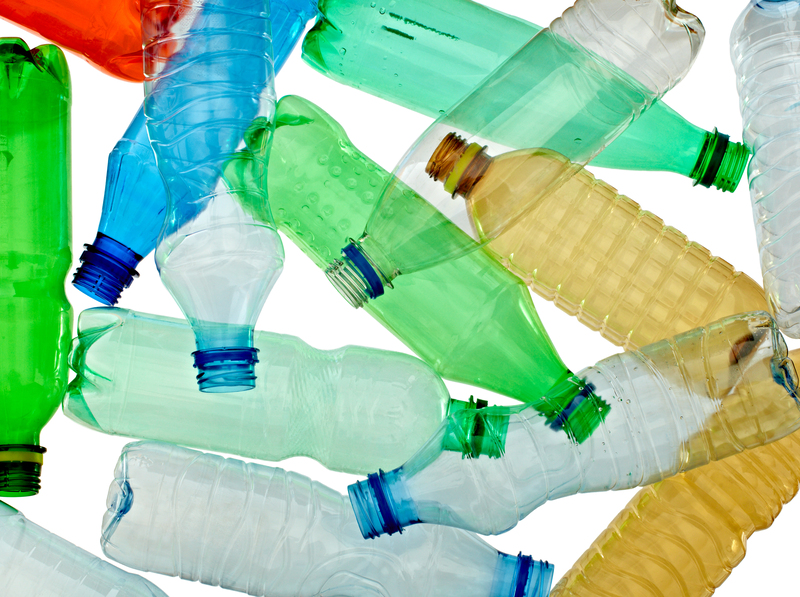How to Handle Used PPE Waste Without Risking Contamination
The global use of personal protective equipment (PPE) has increased dramatically in recent years, especially during health emergencies and outbreaks. While PPE such as masks, gloves, gowns, and face shields are essential for protecting individuals from harmful pathogens, handling used PPE waste presents its own challenges. Improper management of PPE waste can lead to environmental pollution and threaten public health through accidental contamination. This comprehensive guide explores how to handle used PPE waste safely, minimize contamination risks, and comply with best practices.

Why Safe Handling of Used PPE Waste Matters
PPE items are designed to act as barriers against infectious agents. However, after use, PPE becomes a potential source of contamination itself, as it may harbor pathogens or hazardous substances from the environment. Improper handling or disposal of used PPE can cause direct exposure to harmful microbes or toxic chemicals, risking healthcare workers, waste handlers, and the general public.
The Dangers of Improper PPE Waste Handling
- Infection spread: Used PPE may contain viruses or bacteria that can cause illness if touched or inhaled.
- Environmental pollution: Discarded PPE can contaminate soil and water, harming wildlife and ecosystems.
- Resource strain: Inefficient disposal systems can overwhelm waste management infrastructure, leading to unsafe dumping.
- Occupational hazards: Waste handlers exposed to contaminated PPE face increased health risks.
For these reasons, proper handling of used PPE waste is vital in homes, healthcare facilities, offices, and public spaces. Let's dive into the best strategies for managing PPE waste without risking contamination.
Types of PPE Waste and Their Risks
Understanding the common types of PPE and their associated risks helps determine the appropriate handling procedures.
- Masks: Surgical and N95 masks protect against airborne particles but may accumulate respiratory droplets containing pathogens.
- Gloves: Typically made of latex, nitrile, or vinyl, gloves can be contaminated with chemicals or biological materials.
- Gowns and coveralls: Used in healthcare settings, these garments can carry infectious agents after patient contact.
- Face shields and goggles: Protect eyes and face from splashes but need thorough cleaning or safe disposal after use.
- Shoe covers and caps: Worn in surgical or isolation environments, these items are often disposed of after a single use and can retain microorganisms.
Which PPE Waste is Most Hazardous?
Medical waste PPE--used by healthcare workers during patient care or procedures--typically represents the highest contamination risk. However, even PPE used in community settings can be dangerous if worn around infected individuals or hazardous materials.
Steps for Proper PPE Waste Handling and Disposal
To handle used PPE safely and avoid cross-contamination, follow these essential steps:
1. Remove PPE Safely (Doffing Procedures)
The process of taking off used PPE--called doffing--must be done carefully to prevent contact with contaminated surfaces. Always:
- Remove gloves first, as they are most likely to be contaminated. Pinch the outside of one glove near the wrist, peel it away, then slide your finger under the other glove to remove it without touching the outside.
- Remove gowns or coveralls by breaking ties or unfastening them at the neck and waist, turning the garment inside out while rolling it into a bundle.
- Take off masks and face shields by handling straps only, never touching the front.
- Dispose of all PPE immediately in a designated, lined waste bin.
- Wash your hands thoroughly with soap and water or use hand sanitizer after removing PPE.
2. Contain Used PPE Immediately
Contamination occurs when used PPE is left exposed or mixed with standard waste. Implement these containment practices:
- Designate special bins or containers: Use sturdy, leak-proof, pedal-operated bins lined with plastic bags marked "infectious waste" or "PPE only."
- Keep containers closed: Ensure bins have lids that are kept closed except when discarding PPE.
- Avoid compacting waste: Never press down on PPE-filled bags, as this can release pathogens.
- Separate PPE waste from regular trash: Especially important in healthcare and public facilities.
3. Label and Store PPE Waste Properly
Correct labeling alerts everyone to the contaminated nature of the waste and ensures it receives appropriate handling downstream.
- Label bags or bins: Use color-coding (often red or yellow) and clear labels such as "Used PPE--contaminated."
- Store PPE waste temporarily in a safe area: This area should be separate from general waste storage and should not be accessible to the public or unauthorized personnel.
4. Transport PPE Waste with Care
During transfer to a disposal site or central collection point, avoid unnecessary handling or rupturing of waste bags.
- Wear clean gloves and other required PPE during waste handling.
- Keep waste bags intact: Repair or rebag any ripped containers inside the storage area.
- Transport waste promptly--do not allow it to accumulate for long periods.
- Disinfect carts or trolleys after each use.
5. Final Disposal: Incineration, Treatment, and Landfilling
The environmental impact of PPE waste is a growing concern. The safest and most effective disposal method depends on the type and volume of waste.
- Incineration: Preferred for medical PPE waste, as it destroys pathogens and reduces volume. Use only approved, high-temperature incinerators.
- Autoclaving: Some facilities use steam sterilization before landfilling to disinfect PPE waste.
- Sanitary landfills: For non-infectious or sterilized PPE, sealed landfills are suitable if local regulations permit.
- Prohibit open burning or illegal dumping: This creates hazardous emissions and serious health risks.
Key Practices to Avoid PPE Waste Cross-Contamination
Personal Safety Measures
- Never reuse single-use PPE. Always dispose of single-use masks, gloves, and coveralls after one use.
- Avoid touching your face or other exposed skin when handling used PPE.
- Wash hands and disinfect surfaces regularly throughout the disposal process.
Workplace Protocols
- Provide training: Ensure all staff are trained in the correct methods of donning, doffing, and disposing of PPE waste.
- Establish written procedures: Clear, posted guidelines help prevent errors and reinforce safe practices.
- Monitor compliance: Supervise waste handling to guarantee protocols are followed.
- Supply adequate waste containers: Place enough bins in strategic locations to minimize the need to carry used PPE long distances.
Disinfecting Reusable PPE
While many PPE items are designed for single use, some--like goggles or face shields--can be reused after proper disinfection.
- Clean with approved disinfectants: Use alcohol-based or bleach solutions suitable for PPE materials.
- Wear gloves while cleaning: Prevents direct hand exposure to contaminants.
- Allow to dry fully: Ensure all surfaces are dry before storing or reusing.
Regulatory and Environmental Considerations for PPE Waste Handling
Understanding Legal Requirements
Many countries and municipalities have regulations governing the handling, transport, and disposal of PPE and other medical wastes. To avoid legal liability and ensure community safety:
- Consult local or national guidelines for the classification of PPE waste (biomedical, hazardous, etc.).
- Obtain necessary permits for waste storage, transport, and disposal if required.
- Maintain documentation--waste transfer manifests, treatment certificates, and compliance records should be kept for audits and inspections.
Environmental Impact and Sustainability Solutions
- Reduce PPE waste generation: Use reusable PPE when safe and feasible without compromising protection.
- Participate in recycling initiatives: Some PPE waste (especially uncontaminated plastic items) can be recycled if appropriate systems exist.
- Use eco-friendly alternatives: Explore PPE made from biodegradable or compostable materials for non-high-risk settings.
- Support innovations in waste treatment: Initiatives like pyrolysis, plasma gasification, or enzymatic degradation are being developed for safer PPE waste management.
PPE Waste Handling at Home and in the Community
Guidelines for Household PPE Waste
- Bag used masks, gloves, and wipes separately from general household waste.
- Seal bags well before placing them in the trash to protect waste collectors.
- Label "Covid waste" or "Used PPE" on the bag if someone in your household is ill.
- Clean or disinfect trash bins regularly.
- Do not throw PPE waste in recycling bins unless specifically instructed by your local authority.
Community Disposal Points
- Encourage installation of PPE-only bins in public places such as malls, offices, schools, and transport hubs.
- Display clear signage on proper mask and glove disposal.
- Arrange for frequent waste collection to prevent bin overflow and scavenging.

Training and Raising Awareness
Continuous education and awareness campaigns are essential to ensure everyone--from healthcare professionals to the public--understands how to handle PPE waste safely and responsibly. Key strategies include:
- Regular staff training sessions on new protocols and practices.
- Posters and digital materials showing step-by-step disposal instructions, especially during outbreaks.
- Engagement with local government and community leaders to spread best practices.
Conclusion: The Path Forward for Safe PPE Waste Management
In summary, handling used PPE waste without risking contamination requires a systematic approach that prioritizes safety, hygiene, and environmental responsibility. From safe removal of contaminated PPE to secure storage, transport, and final disposal, each stage must be carried out with vigilance and care.
As global PPE usage continues, long-term solutions--including sustainable alternatives, advanced waste treatment technologies, and robust regulatory frameworks--will be essential for protecting public health and our environment. Remember: Proper PPE waste handling is everyone's responsibility. By following the detailed steps and precautions outlined in this guide, individuals and institutions can play a crucial role in reducing the risk of contamination and building safer communities.
Stay informed, stay prepared, and always handle used PPE waste with utmost care.
Frequently Asked Questions (FAQ)
-
Can I recycle used PPE waste?
Most contaminated PPE waste should not be placed in standard recycling. Some facilities offer specialized recycling for large volumes of uncontaminated PPE. Consult your local waste authority for instructions. -
What should I do if my garbage collector does not accept PPE waste?
Contact your municipal waste department for dedicated collection points or guidance. -
How frequently should PPE waste bins be emptied?
Daily or as often as needed to prevent overflow and minimize exposure risks. -
Are cloth masks considered PPE, and can they be washed and reused?
Cloth face coverings provide basic protection and should be washed regularly. True PPE must meet regulatory standards; single-use items should not be washed for reuse.
For more up-to-date guidelines, always refer to your national health and environmental protection agencies.
